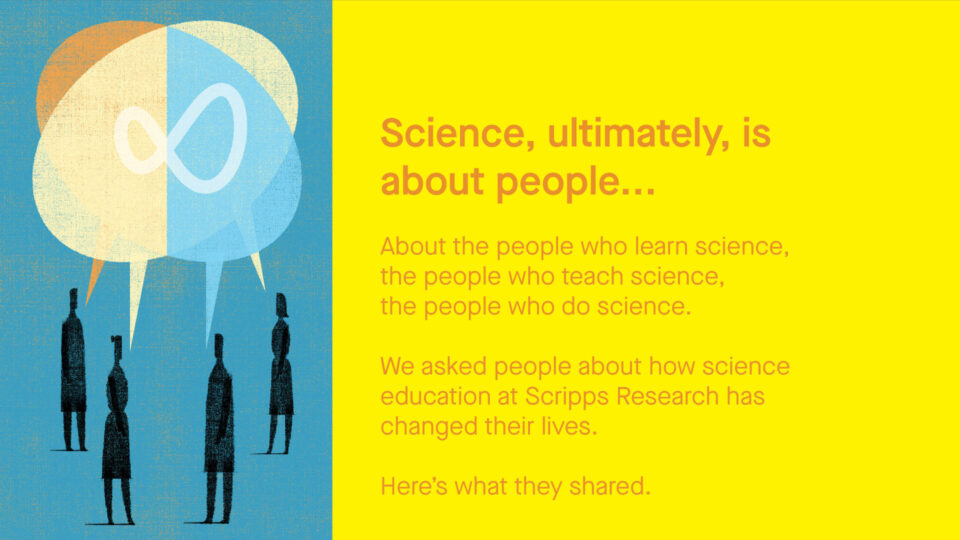
What has your education or contribution to education at Scripps Research meant to you?
The Graduate Students
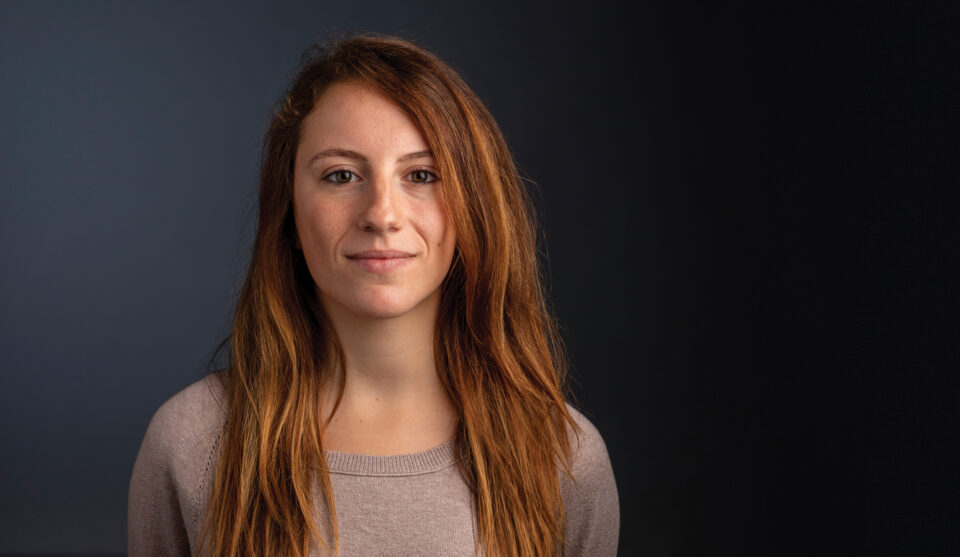
LISA BARTON
Graduate Student
Skaggs Graduate School of Chemical and Biological Sciences
Scholar
Won a National Science Foundation Graduate Research Fellowship
Co-author
Co-authored a paper in Science describing how to more easily make a class of molecules proven useful for drug development
Dancer
Danced competitively for nine years
I’ve always been aware of Scripps Research and its excellent reputation, especially in chemistry. When I was an undergraduate at Northeastern University in Boston, I participated in a program that alternated six months of classroom studies with six months of internships at pharmaceutical companies. So, I had the opportunity to work at three different companies, two large ones—Cubist Pharmaceuticals [acquired by Merck & Co.] and Millennium Pharmaceuticals [acquired by Takeda]—as well as a start-up. Since I was working among top chemists, I quickly learned where the best chemistry research was being performed and where the best education and training were offered. And both were at Scripps Research.
Although I really wanted to stay in the Boston area to do my graduate studies, I didn’t want to limit my options, so I investigated the graduate program at Scripps Research along with the faculty members associated with the program. When I saw the amazing research Phil Baran was accomplishing, I decided I could not not work with the #1 synthetic chemist in the field. Later, when I reached out to him to express my interest and he said there was a space in his lab if I wanted it, I quickly accepted.
What I really like about working in Phil’s lab is his understanding of how chemistry can be most useful. He can look at a hypothesis and say “that will be a hard bond to make, but it would be really useful for such-and-such a purpose; let’s find a way to do it.”
My career goal is to work with biologists to understand drug targets then use my chemistry training to design molecules that hit those targets. I’m learning to do that here.
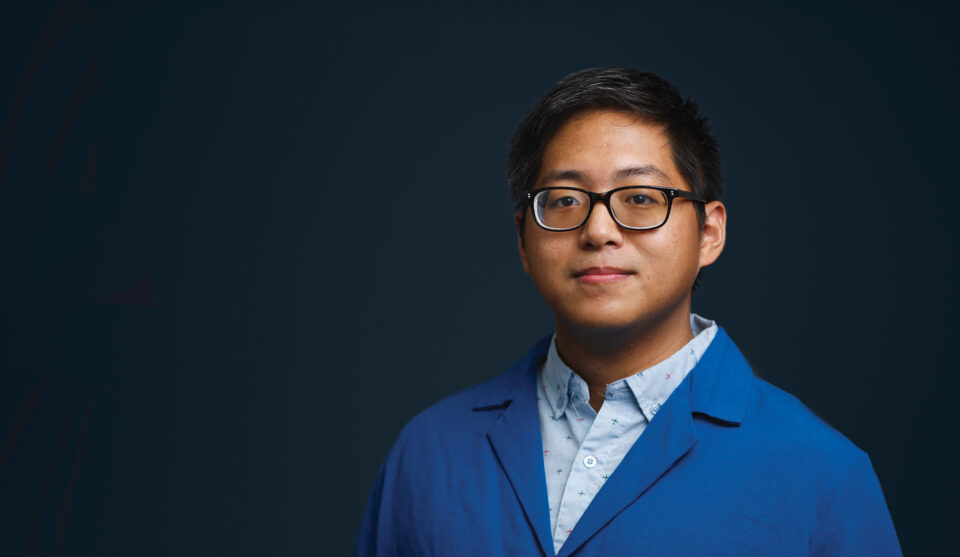
MATTHEW COSTALES
Graduate Student
Skaggs Graduate School of Chemical and Biological Sciences
Fellowship
The American Chemical Society’s Division of Medicinal Chemistry awarded him one of its prestigious Medicinal Chemistry Predoctoral Fellowships
North to South
Born in Toronto, grew up near Cleveland, and attended high school and college in Maryland
Focus
Developing tools and approaches to optimizing the selectivity of potential oral medications to target RNA, a strategy for addressing previously “undruggable” diseases
I was born in Toronto, Canada, and raised in North Olmsted, Ohio, a suburb of Cleveland. My mom was a nurse and my dad was a civil engineer. In high school, he got a job working on Dulles airport, so we moved to Maryland. My parents wanted me to become a doctor. I went to the University of Maryland as a chemistry major, but when I started doing undergraduate research, my perspective really changed. No disrespect to doctors, but if you look from a bird’s-eye view, the only way to completely solve diseases—to cure them—is to attack the disease itself.
So senior year I called my parents and said, “I don’t want to be a doctor.” They were disappointed. I took a break from school to experience more research working at the U.S. Food and Drug Administration’s Immunobiology Branch in the Center for Food Safety and Applied Nutrition. After two years of research into foodborne disease, I felt ready to apply to graduate school. I came up with a mission statement for myself: We need to apply chemistry to solve biological problems in many incurable diseases.
Looking at graduate schools, I did what everyone does and looked at U.S. News & World Report. People want to be at a reputable place, but you can’t pick a grad school based just on rank. You have to look at the people who work at an institution. I wanted to do completely new things and put my stamp on a field where others have said “you can’t do that.” When I interviewed at Scripps Research and I looked at different labs, I came across the Disney lab. Matt Disney is a very charismatic, charming guy; honestly, the most passionate person about research that I’ve met. A lot of people think that diseases are caused by proteins. Accessing the RNA machinery behind them, learning what chemical space we can use to target these diseases, that can open up new ways to solve incurable diseases. That was his elevator pitch to me. At that moment, I was in.
I just found out my sister was diagnosed with acute myeloid leukemia and I felt completely helpless when she told me the news. When something like this happens, you look back and say, “This is my sister and she is suffering, and I cannot do anything.” If 20 years from now, what I’m working on actually becomes a therapy, maybe then I will no longer feel helpless. Maybe other people in this position won’t have to feel helpless.
I wouldn’t be able to do this without this institution, without this infrastructure, without all of these great scientists who are here, with all of the collaborations. We’re this organism working toward making life easier for people with currently untreatable diseases.
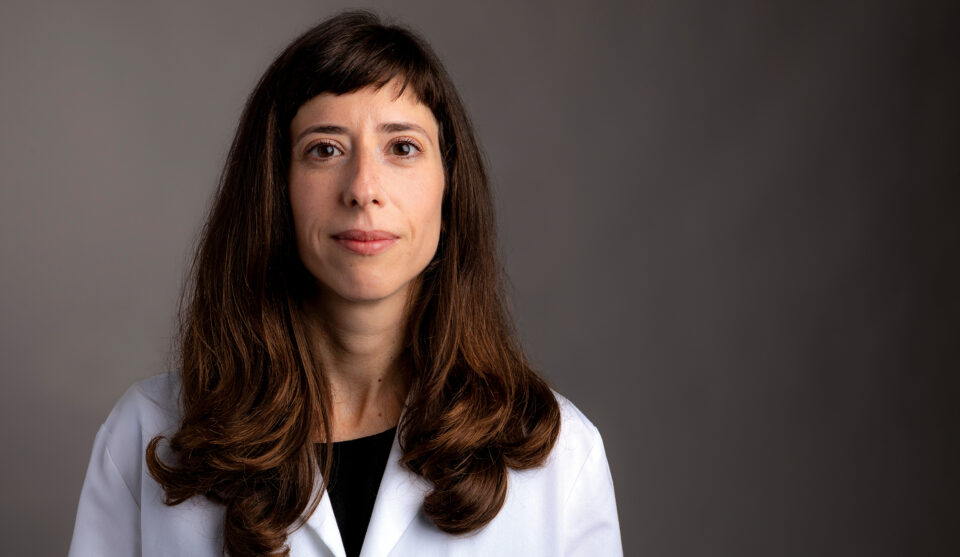
CECILIA MONTEIRO, MD
Graduate Student
Skaggs Graduate School of Chemical and Biological Sciences
Portuguese Roots
Previously an assistant neurologist at Hospital Geral de Santo António in Porto, Portugal
Awards
Received the Ellen Browning Scripps Foundation Fellowship Award
Inventor
Patented a new diagnostic method for transthyretin amyloid diseases
After earning my medical degree, I decided to become a neurologist mainly because I was fascinated by the large number of “unknowns” in the neuroscience field. Most neurological diseases, especially the neurodegenerative ones, are still incurable, and I wanted to be involved in new impactful discoveries. I did my residency at Hospital Geral de Santo António in Porto, Portugal, which is a reference center for patients with familial amyloid polyneuropathy, a progressively fatal neurodegenerative disease associated with aggregation of a protein called transthyretin. As a neurology resident, my clinical research focused on investigating methods to diagnose these patients before they became too sick for treatment. The hospital had an ongoing research collaboration with Dr. Jeffery Kelly, one of the experts in this field, and whose work led to the first approved drug for the treatment of these diseases. Through this collaboration, I first learned about Scripps Research.
After finishing my neurology residency, I decided to formally pursue a PhD and Scripps Research was my top choice. It is a challenging program, but I tell people if you are looking for a place with a lot of freedom to pursue your idea, you can find a way to do it here. I was able to continue working with Hospital Geral de Santo António and collected lots of clinical data and received patient samples that I analyzed with new methods developed here in the lab. Thanks to this work, I published one paper and am currently finalizing two more. More importantly, I have found new biomarkers and disease mechanisms. This is a very productive place for scientists who want to have an impact on human health.
I miss working directly with patients; there is an immediate gratification at the end of the day. You think, maybe I helped that person a little bit; but I know, ultimately, that the translational research I have done at Scripps Research will have a greater impact on patients’ lives.
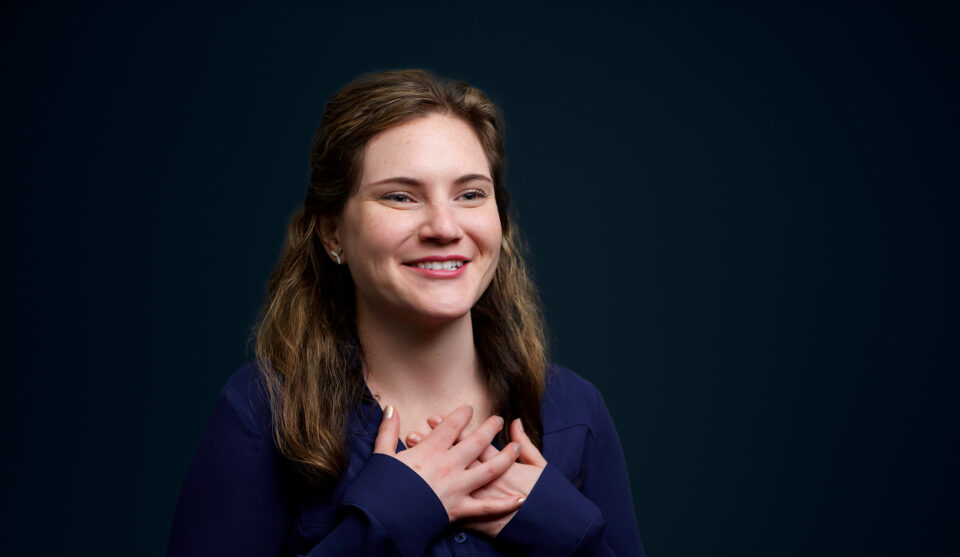
REBECCA GOYDEL
Graduate Student
Skaggs Graduate School of Chemical and Biological Sciences
Jupiter, FL Roots
A first-generation college student who attended Jupiter High School in 2009
Fellowship
The Frenchman’s Creek Women for Cancer Research supports her graduate fellowship
Inspiration
Her father’s struggle with stomach cancer spurred her interest in developing better, more targeted anti-cancer treatments
I moved to Florida my sophomore year of high school because my dad lived there, and he was sick with stomach cancer that had metastasized. When he was well, Dad used to wake up at 2 in the morning to deliver bread. Sometimes he would take me in the truck. People loved him. He always joked around, making people smile. Gleevec had recently come out—the first targeted cancer therapy—and that gave him 5 years. I was 16 when he passed.
I am the first in my family to go to college. I had a college-prep class in high school with a phenomenal teacher who really believed in me. I loved science and math. I thought I could help people by teaching. She showed me that by earning a PhD, I could fulfill all of my career goals.
I knew if I was going to go to college I was going to have to apply for every scholarship I could find. I received a full ride from Fairmont State University in West Virginia, majoring in chemistry with a minor in biology. While visiting my dad in Jupiter, I had watched Scripps Research being built. That memory prompted me to apply for a summer internship. Also, I heard about the DiVerge program, which brings underrepresented students from across the country to the Scripps Research Jupiter campus for a weekend. At a poster session, two projects from the Rader lab caught my attention. Both focused on using the immune system to fight cancer. The following year I was selected for the summer program and worked with (then graduate student) Alex Nanna, who worked in the labs of both Immunology Professor Christoph Rader and Chemistry Professor Bill Roush. I did biology during the day and chemistry at night. I put in long days, but enjoyed every minute because it showed me what I really wanted to do.
For my current thesis project, I am developing an antibody that would direct immune cells to kill cancer cells, only in the presence of the tumor microenvironment. I am focusing on ovarian cancer, since fewer than half of all patients have a five-year survival rate. I want to improve this.
If I could talk to my dad, I would tell him that I feel like I am making a difference. The research I am working on has the potential to advance the cancer research field, and to help so many people.
The Professors
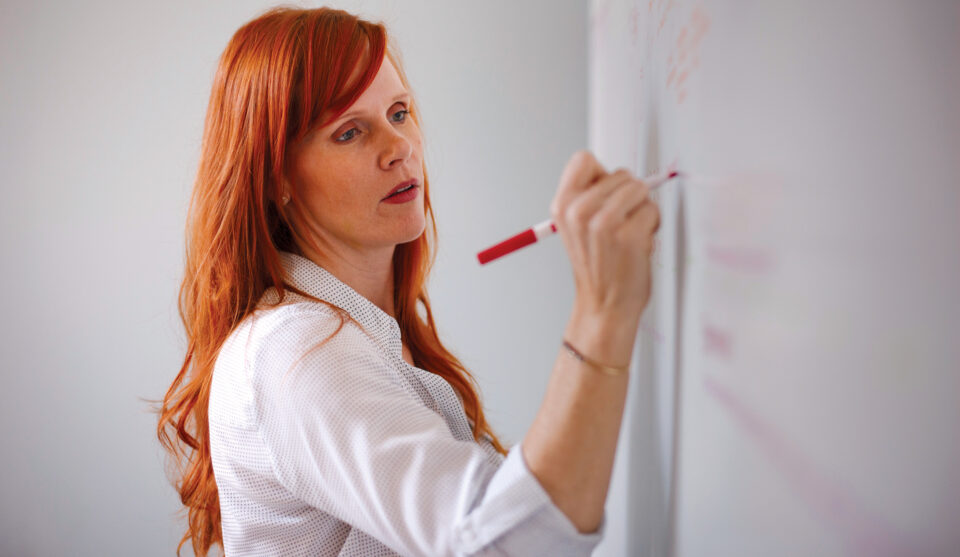
COURTNEY MILLER, PhD
Faculty
Graduate Program
Associate Professor
Department of Molecular Medicine
Department of Neuroscience
Awards
Received the Presidential Early Career Award for Scientists and Engineers, the highest honor bestowed by the U.S. government on young professionals
Leadership
Co-founded the Professional Women’s Nexus to promote women in academia and industry
Scholar-Athlete
Earned two academic scholarships, as well as an athletic one (diving), at her university
I integrate two instructional methods within the Scripps Research graduate program: support and individualization. None of us enters science with the same strengths and weaknesses, so I make it a point to adjust my teaching or mentoring style to best suit each student. Some need help reining in their overly ambitious, experimental ideas, while others need encouragement to keep improving their writing or presentation abilities. Then there are those with imposter syndrome—many, unfortunately, exceptionally bright female students—who need reminding that they do have the talent to succeed and that science will benefit from their particular skills and outlook.
I can relate especially well to those individuals who feel marginalized by the scientific status quo. When I was a grad student, more-senior scientists focused on my physical appearance rather than my intellect. Thankfully, supportive mentors in my own graduate program helped me address that problem head-on. They gave me the backing to persist and succeed so now I’m well equipped to help the young scientists at Scripps Research reach their potential.
One of the aspects I like most about our graduate program is its flexibility in allowing students to customize their curriculums. By taking courses outside their field of study, they gain a broader perspective, which ultimately enhances their contributions to science. A favorite English teacher in high school, who held a PhD in philosophy while also serving as the athletic director, impressed upon me the importance of looking at a problem from as many angles and perspectives as possible, even if that meant leaving your comfort zone. There was absolutely no getting away with confirmation bias, which is also critical in science. Now, I try to convey that same dedication to finding the truth to up-and-coming scientists. I tell them they must face the possibility of disproving their hypothesis. But it’s absolutely okay to be wrong at the start; as we all eventually learn, that often leads to more interesting discoveries.
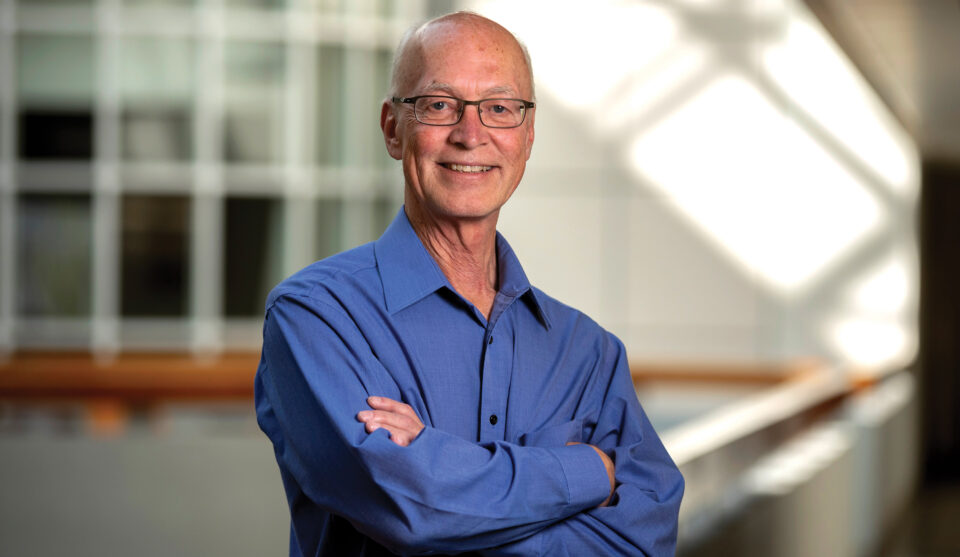
DALE BOGER, PhD
Faculty
Graduate Program
Richard and Alice Cramer Professor of Chemistry
Department of Chemistry
Chemistry Cliffnotes
Authored Modern Organic Synthesis, a widely used chemistry textbook
Ivy Roots
Earned his doctorate in chemistry from Harvard University
Company Man
Scientific co-founder of Abide Therapeutics, Inc.
When the graduate school at Scripps Research launched in 1989, it was the first program focused on the science at the interface between chemistry and biology. That really set the program apart, captured many people’s imaginations, and defined a new frontier for the field of chemistry. Richard Lerner, who was the president at the time, hired some of the world’s best chemists and put them in an environment where they could interact with world-class biologists. It wasn’t forced, it happened organically, and the graduate school still plays a central role in how biology and chemistry at Scripps Research come together in really unique ways.
The first students in the program had a pioneering spirit. Some of them were turning down well-established Ivy League schools to enroll in an unknown and unaccredited program. I can only imagine the conversations they must have had with their parents about that decision. That adventurous spirit still permeates our program. The students who come here aren’t looking for a conventional program. They are looking for the opportunity to focus on science above all else and the flexibility to pursue the scientific questions that keep them up at night. They come with remarkable motivation, curiosity and capacity to absorb information. This allows us to present highly detailed and in-depth courses that lay the foundation for doing great science. We have always fully integrated students into the science of the institute, so that our educational mission and our research mission support one another.
The graduate program pushed the Scripps Research faculty to become better educators. In the early days, we looked at the best programs around the country. We didn’t have a history or a tradition, so we could adopt what we saw worked for other programs and forego what didn’t. When we couldn’t find something we thought was needed, we created it—textbooks, literature research tools…you name it. For instance, with the help of 15 graduate students, I created a textbook on organic chemistry that is still widely used. It’s like the CliffsNotes for organic synthesis—but nearly 500 hundred pages long. If you consider the legion of highly accomplished graduates from our program who have gone on to great things and the educational resources we’ve created, our impact goes well beyond Scripps Research to the whole scientific community.
The Postdoctoral Researchers
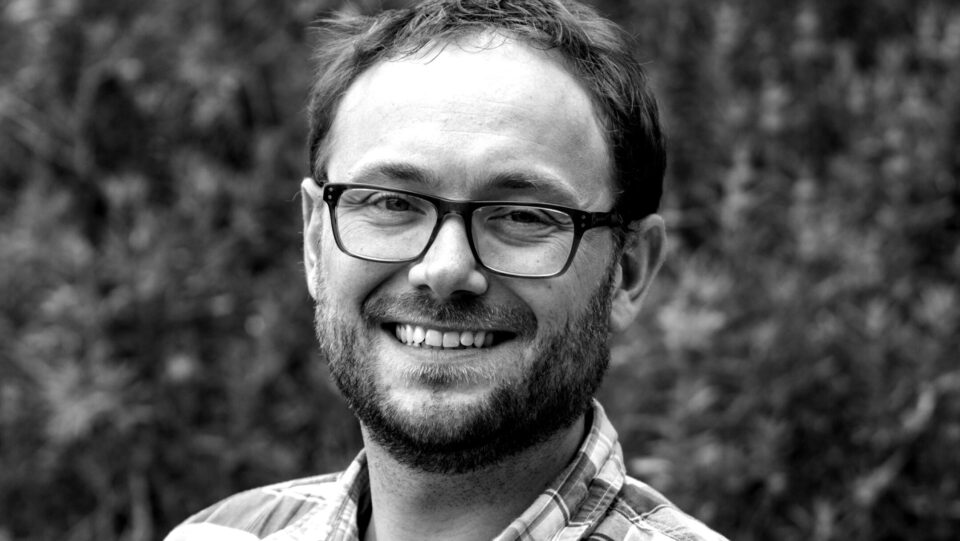
NATHAN GRUBAUGH, PhD
Assistant Professor
Yale University School of Medicine
Former postdoctoral researcher in Kristian Andersen’s lab
Tech Driven
Uses “open science” to quickly share new data with collaborators around the world
Mosquito Whisperer
Has studied mosquitoes from Liberia to Florida to his backyard in Fort Collins, Colorado
Social Media
Participated in Reddit’s AMA (Ask Me Anything) series
I’m an arbovirologist by training, meaning I study viruses that are spread by arthropods such as mosquitoes. I wanted to develop new skills after getting my PhD, so I reached out to Kristian Andersen, PhD, at Scripps Research about working as a postdoc in his lab. Kristian is not an arbovirologist, but he is great at studying genomics and outbreaks. So I wanted to sort of integrate the two fields.
Zika virus wasn’t really in the news then, but in the months following my first talk with Kristian, Zika exploded. Studies showed the association with congenital Zika virus syndrome and microcephaly, and it became clear that there was a lot going on with Zika that we didn’t know. All of a sudden Kristian and I were sending emails back and forth like “We’re working on Zika!”
As soon as I got into the lab, my focus was Zika. We needed to sequence viral genomes to understand how it was spreading. One thing that was unique was that we had direct access to the Genomics Core at Scripps Research. In the midst of an outbreak, it was critical to have samples come in and then have data in hand just four days later.
I look back, and I can’t believe it all came together so quickly. We had international collaborators who all banded together to work on this. I learned a lot from Kristian during this time about the art of collaboration.
I’ve just started my own lab at Yale, and I have this vast network of collaborators already. I’m also taking what I learned from Kristian, what we called genomic epidemiology, to sequence field samples and better understand outbreaks. Getting a faculty position after doing just two years as a postdoc is crazy—I’m about five years ahead of where I expected to be.
I think I’ve gotten lucky along the way, but I’ve also chosen really great people to work with.
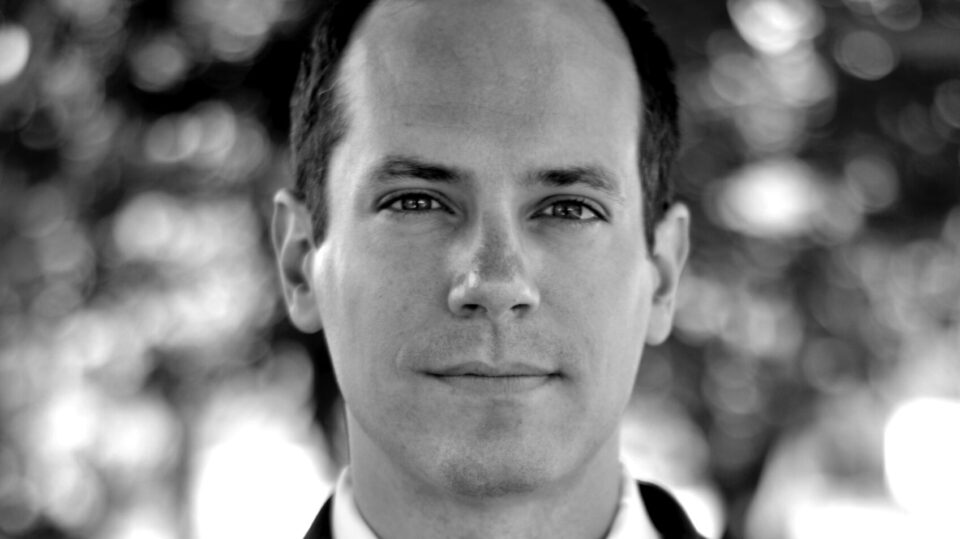
DAVID OYEN, PhD
Postdoctoral Researcher
Scripps Research
Ian Wilson’s Integrative Structural and Computational Biology lab
Malaria Detective
Oyen’s most recent study showed that human antibodies can neutralize the malaria parasite by working together to lock a protein on malaria’s surface into a “spiral staircase-like” structure. This phenomenon had never been seen before and opens the door to better targeting malaria through vaccines.
Supporting Teamwork
Oyen’s recent malaria study was a close collaboration with researchers in Andrew Ward’s lab at Scripps Research
In the area of structural biology, which is what I am interested in, a lot of great findings come from Scripps Research, and I wanted to be a part of that. I came here in 2012 to work in the lab of Peter Wright and then moved to the lab of Ian Wilson. We’re interested in how antibodies bind to pathogens like HIV and malaria. This is a field called “rational vaccine design.” The idea is that in order to design a next-generation vaccine, you need to know the atomic details of highly protective antibody interactions. With malaria, for example, you need to know what part of the elicited antibodies recognizes what part of the malaria antigen. And we’re getting the first-ever looks at those interactions now.
Besides technical skills, I’ve improved on my people skills since I’ve been here. Especially since Scripps Research is such an international environment, you have an opportunity to meet people with different backgrounds and viewpoints which will widen your own perspective.
My goal has been to keep on learning, keep on improving. And of course, hopefully, that will lead to good publications as well. I want to do research that I enjoy, is challenging and has an impact. Whether that may be in industry or academia comes second.
I’m originally from Belgium, and my experience as an international scholar at Scripps Research has been great. Since there are many other internationals here, it is easy to get help and tips on how to adjust to American life, get a driver’s license, do taxes, etc.
The Clinical Scholar/Physician
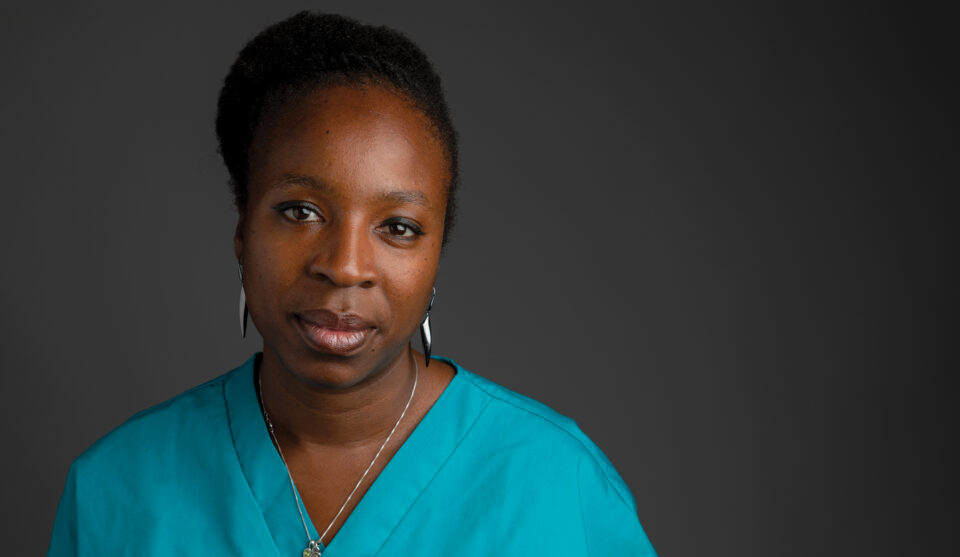
TOLUWALASE AJAYI, MD
Clinical Researcher
Digital Medicine
Scripps Research Translational Institute
Education
Earned her medical degree from University of Kansas Medical Center
Training
Trained as a palliative care physician with a special interest in pediatrics
Advancing Care
Interested in harnessing digital health technologies to guide pain management
I was born in Ibadan, Nigeria and lived there for several years until the country went through political upheaval. My mother was actually imprisoned for protesting the government. Her friends managed to get her out, and we fled to the U.S. My mother, sisters and I arrived in Ithaca, New York, where my mother secured a teaching position at Cornell University. My father joined us a year later and we eventually settled in Lawrence, Kansas.
I always knew that I wanted to be a pediatrician. I wanted to give kids a voice and advocate for those who could not advocate for themselves. During my residency at the University of Kansas, where I received my medical degree, I discovered a passion for the field of pain medicine. I was specifically interested in helping kids with sickle cell disease, cystic fibrosis and survivors of cancer. I love talking to families and helping them through crisis situations. Helping reduce or eliminate a child’s pain or nausea so they can go back to being a normal kid is hugely rewarding.
But there’s a lot of room for improvement when it comes to the way we currently treat pain. Our approach needs to be more personalized. That’s why I applied for the KL2 Clinical Scholars program at the Scripps Research Translational Institute. I’m interested in figuring out ways to harness digital health technologies to guide pain management. Currently, a number of wearable devices exist that continuously monitor various vital signs. A change in these signs—heart rate, blood pressure, body temperature—might indicate the patient is in distress, allowing the doctor to adjust medications to meet the patient’s individual needs.
Since graduating from the Clinical Scholars program, I’ve continued my research. I’m currently conducting two small clinical trials: one in adult cancer patients, assessing the impact of neurostimulation technology to provide relief from chronic pain, and the other in kids with sickle cell disease or cancer, evaluating the utility of a wrist-worn monitor that tracks vital signs as well as sleep.
The Donors
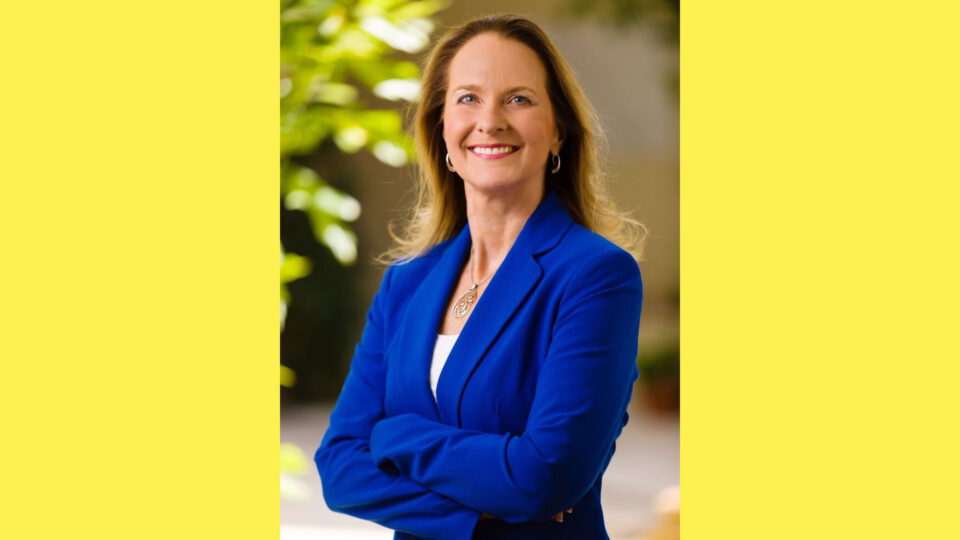
CHRISTINE KOEHN, PhD
Executive Director
The Celia Lipton Farris and Victor W. Farris Foundation
Education
Earned her doctoral degree in applied psychology
Giving Back
Launched multiple collaborative efforts, including ones to help low-income students obtain
a postsecondary education
Socially-minded
Strategically invests foundation funds for maximum impact on social issues that include educational achievement
As executive director of The Celia Lipton Farris and Victor W. Farris Foundation, I help identify which organizations best align with the foundation’s philanthropic priorities. Our relationship with Scripps Research began in 2014 when we created the Farris Foundation Fellowship at Scripps Florida because it aligned with our interests in biomedical research, STEM education and postsecondary educational support. We were so pleased with our relationship and the impact the foundation’s funding was making that we decided to endow the fellowship in 2016.
This fellowship continues to support the foundation’s interests in multiple ways. First, it provides high quality education to budding scientists. We’re thoroughly impressed with the caliber of the students and believe that the educational programs at Scripps Research are exceptional. Second, by contributing to the education and training of the next generation of leading scientists, we’re enhancing cutting-edge biomedical research; that was one of the original priorities for Victor Farris. And, third, because our Fellows mentor younger students, working side-by-side with aspiring scientists of high school and college age, we’re also able to enrich STEM education in the Palm Beach County area. That’s one of our foundation’s current interests: enabling young people with the skills to reach their full potential and lead successful lives. So, the endowed fellowship at Scripps Research provides a lot of depth for our dollars.
Personally, I’ve enjoyed meeting our Fellows—there are three to date—and watching their careers blossom. Each brings unique skills to the institute and is pursuing a different area of research. That adds to our excitement because we see our support subsequently reaping results across diverse scientific arenas.
We are also really pleased with the communications we receive from each Fellow and their advisor. When we bring board members for site visits, the science and its impact are always clearly explained. And, in observing the positive relationship between student and advisor, we can see that Scripps Research provides a very supportive training environment. Further, we always leave feeling that the work we’re supporting has the potential for real world impact, something we may all benefit from one day. Overall, this has been a great partnership for us. We’re truly excited to continue it.
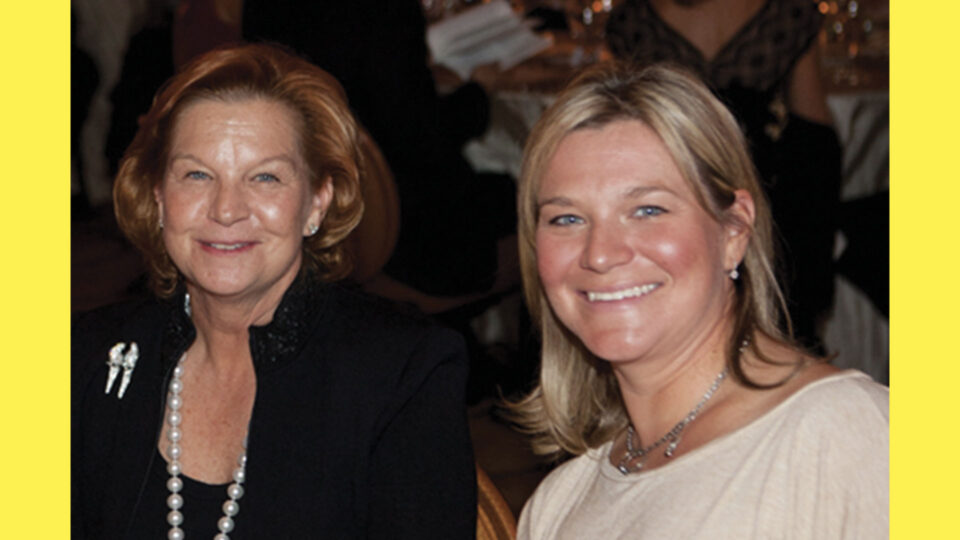
Claudia and daughter, Jennifer, pictured above.
CLAUDIA SKAGGS LUTTRELL
Board of Directors
Scripps Research
President
Skaggs Institute for Chemical Biology
Avid Horsewoman
Has won several national championships showing her horses during a 30-year career
Modern Cowgirl
Farms the land and breeds cattle and polo horses on her Idaho ranch
Giving Back
Serves on multiple boards for foundations, churches and nonprofits
My family, beginning with my parents, Sam and Aline Skaggs, has always believed in the important role education plays in improving our world. So, shortly after I was elected to the Board of Directors at Scripps Research, I began looking for ways I could help expand the already exceptional resources at the institute. My dad and I were able to establish a one-of-a-kind academic partnership with the University of Oxford that enables select students to blend doctoral studies at either the California or Florida campus of Scripps Research with studies at the university campus in Oxford, England. Students graduate from the five-year Skaggs-Oxford Program with a combined PhD/DPhil degree, along with a multidisciplinary education and academic connections on two continents. Those are real assets to young scientists. I know that one of the Skaggs-Oxford Scholars, Keary Engle, went on to become an assistant professor at Scripps Research where he is developing promising molecules for drug discovery. Having added my support to his graduate education is very gratifying.
As a Board member, I get to meet and talk with the institute president and I’m very impressed with Pete’s vision for the institute. When he shared his idea for launching a $100 million campaign to endow fellowships for all students in the graduate program, I encouraged my family to lend their support. We decided to make a lead gift to the campaign and, to motivate other supporters, established a plan whereby each $500,000 gift from a donor could be supplemented with an equal amount from our foundations to create a $1 million named student fellowship.
It was an honor for all of us when the institute subsequently chose to name the school the Skaggs Graduate School of Chemical and Biological Sciences. At the name unveiling ceremony, former students and current faculty members underscored the importance of this graduate program by speaking movingly about how it had positively impacted their research.
I really believe in the value of the graduate program at Scripps Research and in this endowment campaign. My son, Dallas Luttrell, and daughter, Jennifer Luttrell Benardoni, have added their own contributions, extending our family’s tradition of supporting Scripps Research across three generations now. I know that would make my father proud.